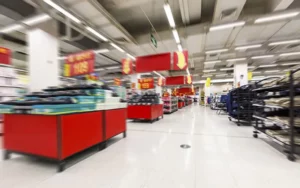Channels of trade, or alternatively known as distribution channels, encompass the steps of marketing in China between the producer and consumer. A common channel in America and Europe is the “supplier, wholesaler, retail” (the retail marketing in China channel) model in which a supplier sells to wholesalers who then resell to retail stores. Once on a retail store’s shelf, the consumer will then purchase it.
In China channel diversity exists; the three most obvious channels are supplier to consumer (direct marketing), supplier to retailer (retail marketing) and supplier to wholesaler (wholesale marketing).
Why? Factories in China range from small (10-20 employees) and up. Also, unlike America – where “big box” retailers dominate – China has many medium-sized retailers.

Types of Marketing Channels
Direct Marketing in China
This process is the marketing and selling of products from a factory directly to the consumer. No fixed retail location between these two entities exists and the internet is a common platform for such transactions to occur.
For example, Tmall (www.tmall.com) has successfully implemented this model of marketing in China, capturing 54% of the Chinese business-to-consumer market (B2C) in 2015. A significant disadvantage to direct marketing, however, is the lower level of service. This channel is increasingly the preferred choice in China.
Retail Marketing Channel in China
This process places a fixed retail location in between the producer and the consumer. In American and European countries several dominant big retailers dominate the overall market. For example, many Americans frequent a local Wal-Mart location to purchase everything ranging from daily necessities to electronic devices.
In China, most retailers are small-sized retailers (each averaging around 15 employees) competing against each other. The over 549,000 retailers highlights the diversity of the market. Additionally, countless “micro shops” exist at every street corner, selling a range of drinks and groceries.
Prior to China entering the World Trade Organization (WTO) in 2001 foreign retail companies were subject to certain restrictions, which included being barred from trade in certain areas or being subjected to time-limits on their trading licenses.
In 2004, 3 years after joining the WTO all restrictions were removed. However, such restrictions limited foreign retailers’ growth as they were essentially late entrants to the market.

Wholesale Marketing Channel
This channel of marketing in China is similar to the retail marketing channel, but with a wholesaler operating in between the retail outlet and the supplier. Western countries are familiar with places like Costco, Metro or Cash and Carry stores. They buy products in bulk amounts from the manufacturer and sell them in smaller sized batches to smaller retail stores.
In marketing in China the wholesale approach is taken much further than that provided by Costco: there are many small Chinese businesses which wholesale specific products (usually 1 or 2 product category) and focus on the domestic market.
These enterprises are often run by one person or a small team of employees. Furthermore, they can provide other small enterprises with many alternatives in one product category immediately by having these products in stock. These small Chinese wholesale businesses fill a gap in which larger Chinese companies cannot provide.
The Future of Marketing in China
Currently in China, these three channels are developing further. The direct marketing channel is currently the strongest, which is shown by the strength of the Alibaba Group dominating the business-to-consumer market.
The retail market scene in China is also developing; as standards of living are increasing, consumers have more money for goods. Likewise, as Chinese consumers increasingly value services, bigger retail stores will emerge. Uncertainty in the market exists due to a lack of reliable data regarding both new “trendy” locations and consumer demand.
Marketing in China may be slowly heading towards an oligopoly market structure, with market concentration amongst big retailers occurring. This market structure is unlikely to be reached anytime soon, due to the vast amount of small, independent retailers who currently fill a large part of the market.
In the West, the retail market is defined and shows an industry dominated by only a few major retailers, but for now in marketing in China, there is a lot of competition and many alternatives to choose from.









